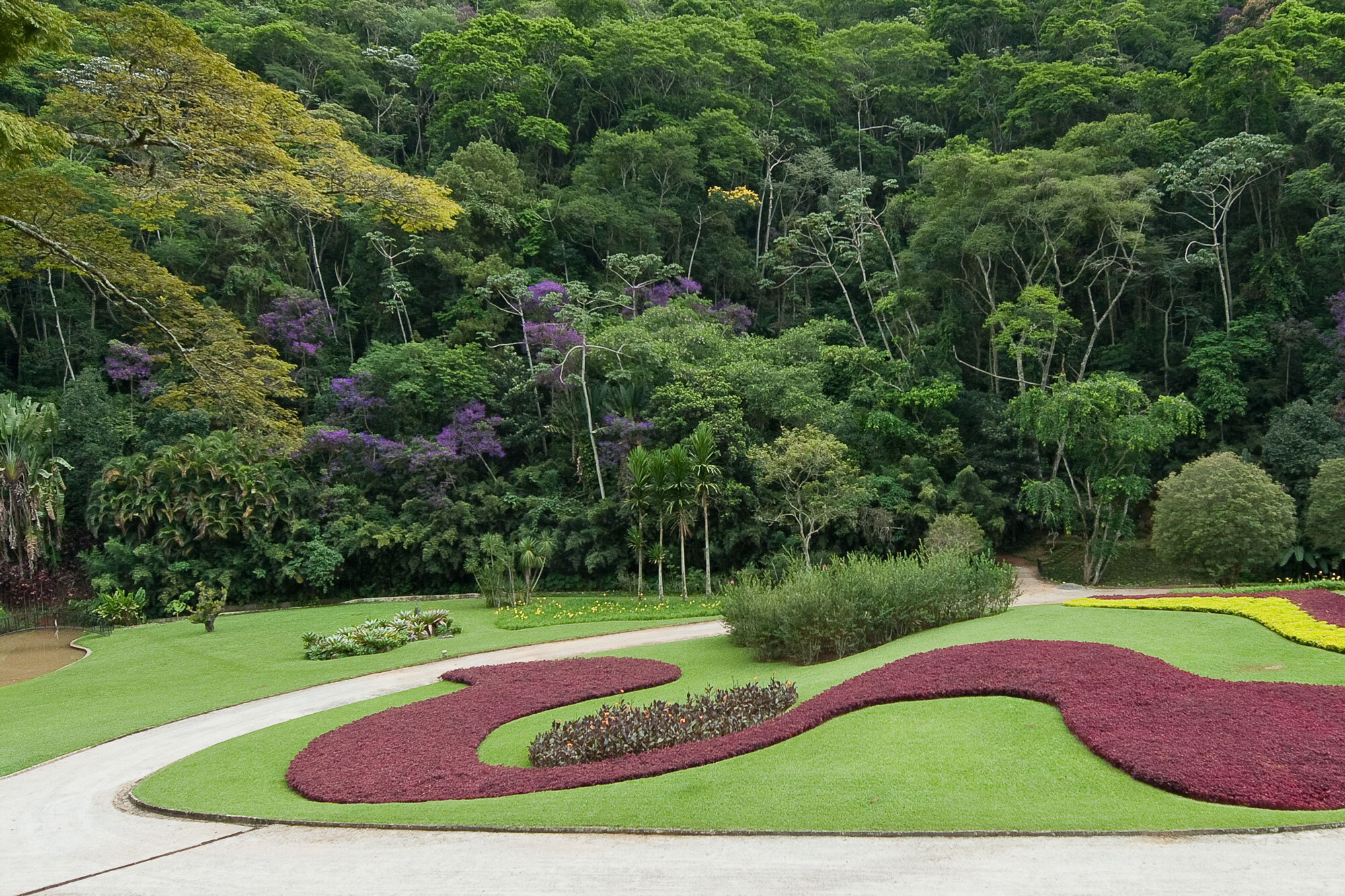296
296
Of pierced design
Silver
Signed Burle Marx
Inner circ. 6.75 in, width 0.25 in; Gross weight 13.6 dwts
estimate: $800–1,200
result: $756
follow artist
This work will ship from Lambertville, New Jersey.


The most amazing and talented brother act in Brazil.
TIME magazine, 21 July 1967
The brothers, Haroldo and Roberto Burle Marx were principally inspired by nature, creating influential, innovative and utterly beautiful modern jewelry between the 1940s and the 1980s.
The challenging, novel and hard to reproduce forma livre or free form style of cutting stones, became a vital characteristic of Burle Marx jewelry. In rings and brooches from the early years, the cuts resemble Roberto's abstract art, and his sinuous, sculpted landscape designs. It was Haroldo, though, who had trained in lapidary work and gemology.
In the 1950s and 1960s, when contemporary Brazilian jewelry was still focused largely on setting diamonds, emeralds and rubies in white metals, using tired designs, the Burle Marx brothers broke the mold. They drew on Brazil’s natural bounty to make one-of-a-kind, handmade jewels in worked gold, most often yellow and high karat, and deployed colorful gemstones, gaining early admirers worldwide. The jewelry celebrates Brazil’s fecundity in colored gemstones: aquamarine, tourmaline, topaz, garnet, quartz, citrine, amethyst, chalcedony, amazonite, and emerald among many others. Brazil’s leaders began commissioning Burle Marx jewels for visiting heads of state and other dignitaries, and their jewelry helped establish international interest in Brazil’s superb gemstones, making them attractive to jewelers who had long focused on sapphires, rubies and diamonds. (In this effort they kept company with a distant relative, Hans Stern, who founded the eponymous Brazilian jewelry company.) During the period the siblings worked in tandem, each jewel was first rendered in refined gouache drawings and then translated into gold, leaving us an additional legacy of striking modernist jewelry drawings.
There is, however, a subtext to their fascinating story, one that involves a family crisis. The two brothers, after working closely for about a decade, parted ways, possibly over creative and business matters. The exact dates are unclear, but the estrangement was severe enough to endure the rest of their lifetimes. At the time of Haroldo’s death, in 1991, they had not reconciled. Roberto died a few years later. A great deal was left unsaid. As a result, which brother could claim creation of which jewels became a subject of some dispute, as others took up the brothers’ quarrel; similarly, who invented the pioneering forma livre cut of stone is occasionally debated.
The challenging, novel and hard to reproduce forma livre or free form style of cutting stones, became a vital characteristic of Burle Marx jewelry. In rings and brooches from the early years, the cuts resemble Roberto’s abstract art, and his sinuous, sculpted landscape designs. It was Haroldo, though, who had trained in lapidary work and gemology. He knew the hardness, malleability and fracture quotient of Brazilian stones. He claimed ownership of the forma livre cut outright, inventing it around 1948, and went on to create variations on that cut of stone for the entirety of his jewelry career. TIME magazine credited Haroldo with the cut in 1967. The forma livre design did, however, clearly change over time: in the period of brotherly collaboration, when Roberto’s powerful artistry dominated the design process, the gems appear voluminous, spiraling upwards. The cut become distinctly less piercing and more elegantly rippling during the post rift period when Haroldo made jewelry on his own.
After the rift, Haroldo went on to a long career as a star artistic jeweler for Brazilian and international high society and creative collectors. In the world of jewelry, the Burle Marx brothers are among the lost masters. American jewelry insiders may know Haroldo’s work but they have not fully valued its craftsmanship, exquisite forma livre colored gemstones, and enduring beauty. Roberto’s fame as a ground-breaking landscape designer and artist overshadowed public awareness and scholarly appreciation of his artist jewels. He is not known to have made much jewelry himself after the brothers split up. (H. Stern bought certain rights to Roberto’s jewelry drawings after his death and made “inspired by” jewels.)
The jewel works of Roberto Burle Marx and Haroldo Burle Marx, in different ways, are iconic representations of Brazil’s innovative fine jewelry production during the 1950s–1980s, indeed, of Brazilian modernism. They deserve a renewed international reputation and a new, appreciative audience.
Auction Results Roberto and Haroldo Burle Marx